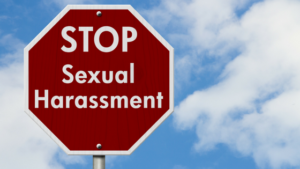#MeToo
If you follow that hashtag, you’ll get a glimpse into the magnitude of the problem women face in the workplace: sexual harassment & assault. From Hollywood to Healthcare, this happens in every industry. With over 50% of female nurses, physicians, and students reporting experiences of sexual harassment, the healthcare industry most certainly is not exempt from sexual harassment.
Sexual harassment is unwelcome conduct, on the basis of gender, that affects a person’s ability to do his or her job, including unwelcome sexual advances, verbal or physical conduct of a sexual nature, and requests for sexual favors.
The Civil Rights Act of 1964 (prohibiting discrimination based on race, sex, color, national origin, or religion) was expanded in 1991 to cover gender bias and harassment, including same-sex harassment.
Individual states have laws regarding sexual harassment, sometimes with broader application than Federal laws.
How exactly do you prevent sexual harassment in your practice?
Relatable
How can you emphasize the less obvious intentions of sexual harassment? Many accounts aren’t simply illustrated, often times a series of inappropriate jokes, subtle comments, and/or gestures that lead to harassment. It’s important that your employees feel safe enough in your practice to recognize the need to report the beginning signs to stop harassment in its tracks, halting a full-blown sexual harassment incident report. Training must depicting daily encounters specific to healthcare professionals as it may not have the same impact if too general.
Continuous & Interactive
Employees may change with the seasons but your standards of conduct cannot. Training must be continuous and interactive process. Here’s an opportunity to think beyond outdated videos and dry text-based PowerPoint slides. Millennials will be more responsive to memorable training with easily referenced material. Consider characters with voices, relatable scenes. Present information through multiple outlets in order to engage your employees and help them retain the right and wrong ways to approach these situations.
Behavior, Not Rules
Unfortunately, most training equates to a new expansive list of rules. Putting the emphasis on what not to do, while shedding little light on appropriate behavior is certainly misguided. Encourage respectful behavior through training, instead of just pointing out what to avoid. Training should highlight suitable behavior and actions, while expressing your organization’s mission, values and expectations.
No Exemptions
No one is too busy or too high up in the company for sexual harassment training. The mentality that it’s more important for lower-level employees is flawed as it is yet another opportunity for an incident. The lack of support from management sets a poor example, diminishing the importance for the rest of the practice. Training has to be mandatory for all employees, regardless of position and previously scheduled engagements. Accommodate schedules and budget by utilizing different training options. For instance, hold smaller group sessions or use webinars.
Although most claims of sexual harassment are made by women, there has been an increase in charges of sexual harassment of men. Since this potentially affects any employee, regardless of gender, it’s time to consider these tools of prevention and an Employment Practices Liability Insurance (EPLI) policy.

